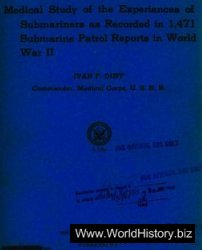Many different types of deposit may be used for palaeoenvironmental reconstruction, on a range of temporal and spatial scales.
Ice Sheets and Glaciers
Long-term (multiple glacial-interglacial cycles) and large-scale (up to hemispheric) climate change may be reconstructed from ice cores, for example, from the Greenland and Antarctic ice sheets. The ice forms annual layers due to variations in its texture and color at different times of year, so the ice cores are intrinsically datable at high resolution. A range of climate proxies may be studied, including presence of dust particles, and oxygen isotope ratios (18O/16O). The layers of ice may also preserve a record of major volcanic eruptions, such as Vesuvius in Italy (AD 79) and Tambora in Indonesia (AD 1815), because acidic gases produced during the eruption can become incorporated into the ice and detected chemically or by changes in electrical conductivity of the ice.
On a more regional scale, glaciers may be used for reconstruction of past climate by study of variations in the size of the glacier through time. Glaciers increase in size/advance with increased precipitation and cooler conditions, and reduce in size/retreat when there is more precipitation and warmer conditions.
Marine and Estuarine Sediments
Annually resolved long-term climate records may also be obtained from deep ocean sediments, where changes in sediment texture or composition may reflect deposition at different times of year. Climate can be reconstructed on the basis of sediment chemistry (especially stable isotopes) or the presence of biological indicators such as foraminifera (single-celled organisms with a calcareous shell), ostracods (small aquatic crustaceans), and diatoms (single-celled algae). Such deposits may also provide information on past sea level, which in turn affected the form of past coastlines.
Former sea level and coastlines can also be reconstructed on the basis of the types of sediment formed at the interface between land and sea. Coastal areas may preserve long sequences of alternating layers of organic peat, formed during periods of marine regression when sea level was relatively low, and inorganic silts, formed as sea level rose during periods of marine transgression. The peat layers in these sequences can be radiocarbon dated to provide a chronology of sea-level change over long timescales.
Speleothems
Speleothems are mineral deposits such as stalactites and flowstones, found in caves, which gradually form over many millenniums. The chemical composition of the thin layers of calcite deposited is related to climate outside the cave, and can be analyzed using methods such as stable isotope analysis. The speleothems may contain annual layering, or can be dated using uranium series dating.
Lake Sediments and Peat Deposits
Lake sediments and peat deposits are very rich sources of information about past environments, especially for the Holocene, because the permanently waterlogged conditions preserve a wide variety of organic remains rarely found elsewhere. These range from entire archaeological sites, to remains of former forests submerged by rising lake levels or engulfed by peat in response to a wetter climate, to microscopic plant and animal remains such as pollen grains and insects. Such remains provide information not only about conditions immediately in the lake or on the mire surface, but also about the surrounding environment.
Like marine sediments, lake sediments may contain annual layers (sometimes known as ‘varves’) allowing high-resolution reconstruction of climate change, again often involving analysis of sediment chemistry or the remains of organisms responsive to temperature, such as chironomids (midges). The quality of the water, in terms of its acidity/alkalinity, or nutrient status, may be reconstructed from the remains of diatoms, which are especially useful for showing whether lakes have been affected by environmental pollution such as ‘acid rain’ or run-off of nutrients from surrounding farmland (which may lead to the process of eutrophication, in which the lake becomes very nutrient-rich, potentially causing loss of biodiversity). Lakes also act as ‘sinks’ for eroded soil, enabling reconstruction of long-term patterns of soil erosion, which may be linked to land-use in the catchment. The quantity and origin of such eroded soil may be determined by chemical or mineral magnetic analysis. Where annual layering is absent, the period of deposition of lake sediments is usually determined by radiocarbon dating if the deposits contain sufficient organic material.
Radiocarbon dating is also usually required for peat deposits. Peat not only contains a wide range of biological remains, but can itself yield information on past climate from changes in the degree of peat humification (the degree of decomposition of the peat) over time. Peat that is highly humified (strongly decomposed) would have formed under relatively warm and/or dry conditions, while peat that is poorly humified (well preserved) formed under relatively cool and/ or wet conditions. For northwest Europe such changes were used in the early twentieth century to establish the broad pattern of climate change during the Holocene, and recent refinements in the methodology and associated dating techniques are showing it to be a powerful tool for reconstruction of climate change on a regional to continental scale. In addition to the state of preservation of the peat, the types of plant remains it contains provide information on conditions on the mire surface at the time of deposition. Furthermore, recent research has combined analysis of plant remains with the study of microscopic organisms known as testate amebas. Different species respond in characteristic ways to variations in wetness of the peat surface, and their distinctive shells (or ‘tests’) are preserved in the peat.
Soils
The nature of the soil can provide much information about past land use, even away from archaeological sites. By studying the characteristics of the soil profile (the different layers in the soil), it is possible to gain information on whether an area was formerly under woodland, whether it may have been plowed, and the extent to which it has suffered from erosion. Microscopic study of the soil structure and composition (soil micromorphology) may assist in interpretation by allowing identification of soil components, leading to greater understanding of soil origins and formation processes. Chemical analysis may also provide clues to former agricultural practices, such as application of manure or grazing by domestic animals, which may be detected by phosphate analysis (see Soils and Archaeology).
Both human activity and natural factors, such as climate change, may cause soil movement away from its point of origin and deposition elsewhere. In hilly areas soil may move down-slope and become deposited in valley bottoms, where it is termed colluvium. Colluvium has often formed as a result of soil destabilization when previously wooded sites are cleared and used for arable agriculture. Colluvium in areas of chalky and limestone soils may be rich in mollusk shells, which can be used to reconstruct the environment in which the deposit formed. Soil that erodes into streams and rivers may later be deposited as alluvium, either along river courses or at the mouth of the river where it meets the sea. Alluvial soils are often favored for agriculture, as they tend to be mineral rich and moisture retentive. However, alluvium deposition sometimes caused problems for past societies, such as clogging the ancient harbor at Ephesus in Turkey, making it inaccessible from the sea.




 World History
World History









